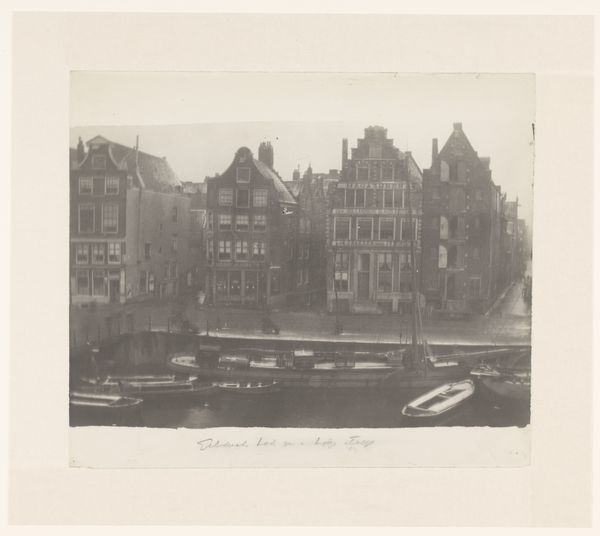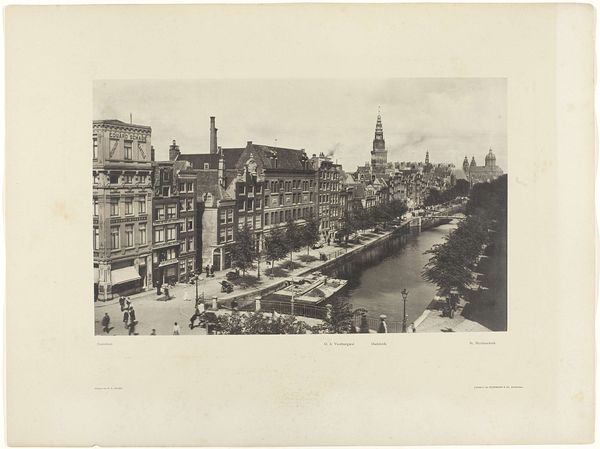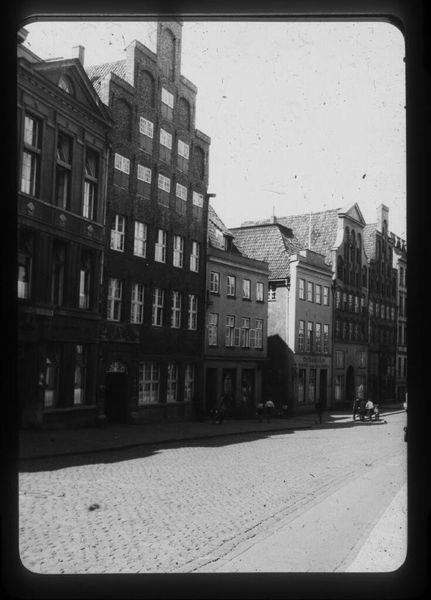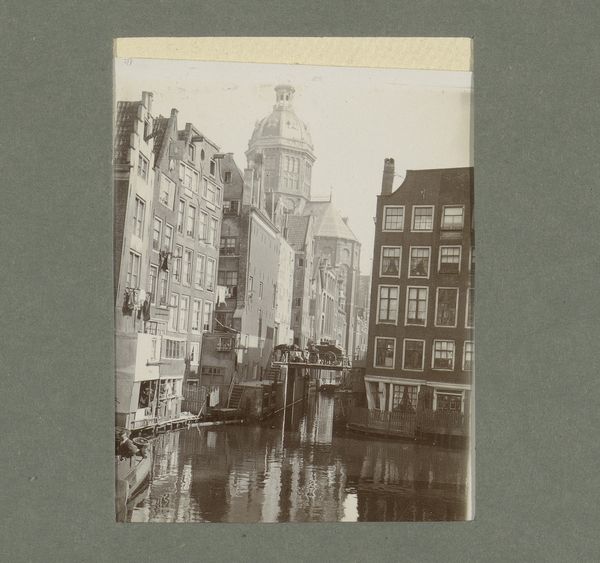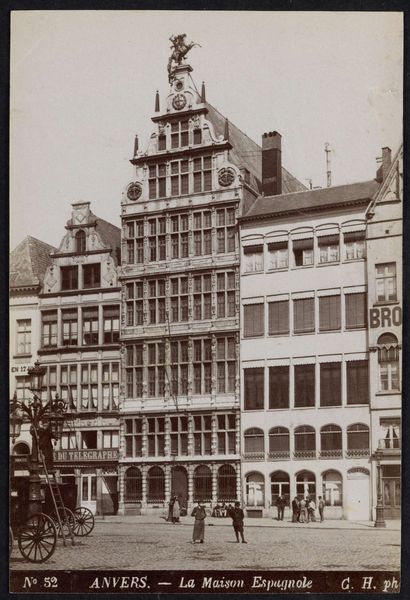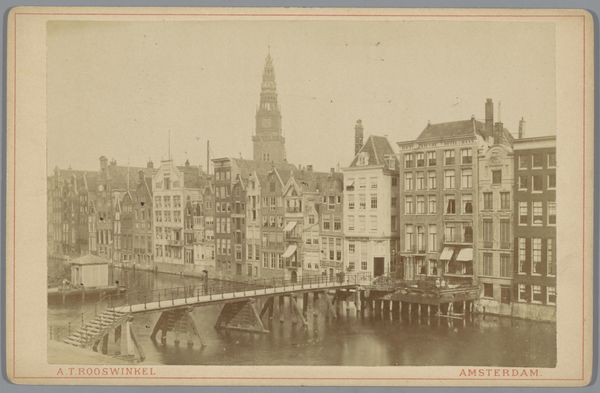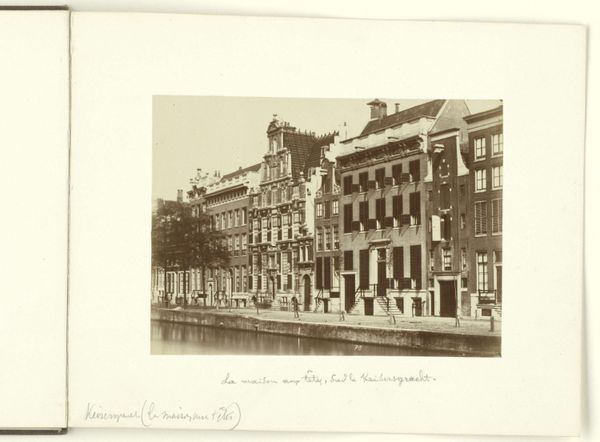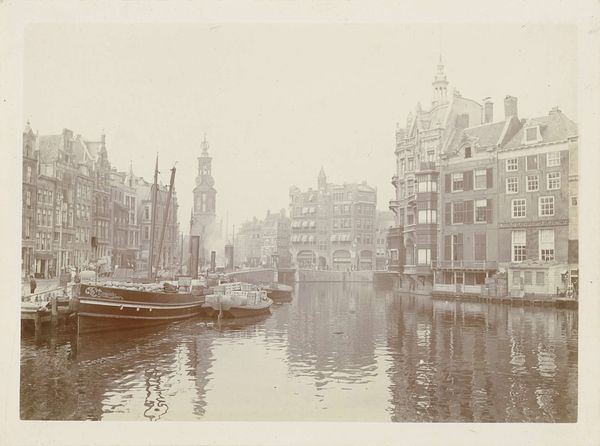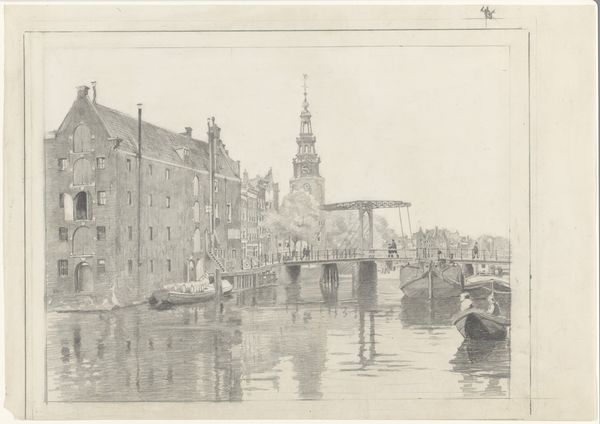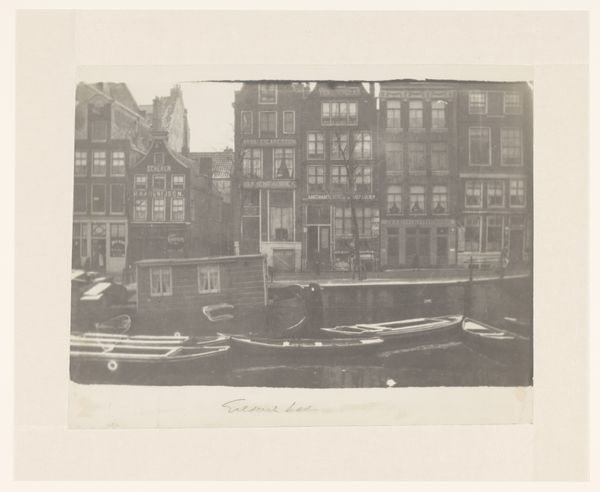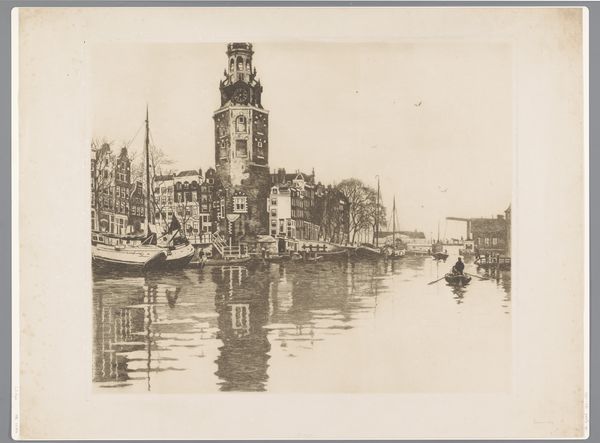
Dimensions: image: 227 x 168 mm
Copyright: © Estate of Albert Renger-Patzsch / DACS 2014 | CC-BY-NC-ND 4.0 DEED, Photo: Tate
Editor: This is Albert Renger-Patzsch's photograph, "Hamburg, St Nicholas’s Church." I'm struck by the contrast between the industrial-looking fence and the more classical architecture in the background. What do you see in this piece? Curator: Renger-Patzsch highlights the materiality of the built environment, no? Consider the social context: Germany recovering from WWI, embracing industrialization. The photo emphasizes the manufactured aspects of both the modern fence and the older buildings. The church's spire, once a symbol of spiritual aspiration, is here presented as a constructed object, viewed through the lens of industrial production and material reality. What do you make of the composition? Editor: I see your point. It’s less about faith, more about…labor? It makes me rethink how materials shape our perception. Thanks! Curator: Exactly. It's a departure from romanticizing architecture, and more about understanding its production and place within a changing society.
Comments
tate 3 months ago
⋮
http://www.tate.org.uk/art/artworks/renger-patzsch-hamburg-st-nicholass-church-p79964
Join the conversation
Join millions of artists and users on Artera today and experience the ultimate creative platform.
tate 3 months ago
⋮
Hamburg, St Nicholas’s Church is a black and white photograph documenting a harbour scene in the German city of Hamburg. An unbroken row of building facades line the edge of the peaceful waterfront, behind which rises the spire of St Catherine’s Church, traditionally known as the church of seafarers. The harbour itself is deserted, except for several moored barges. In the foreground an iron railing stretches across the composition from left to right, casting precise rectangular shadows on the pale stone below. The linear shadows create a graphic geometric patterning, echoed by the abundance of rectangular windows that look out over the water.
